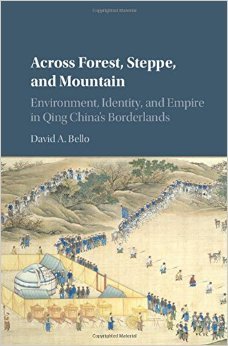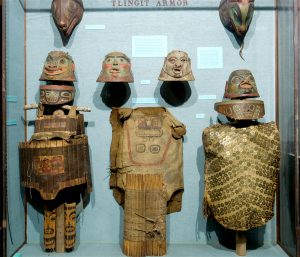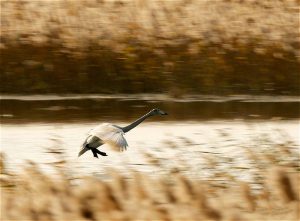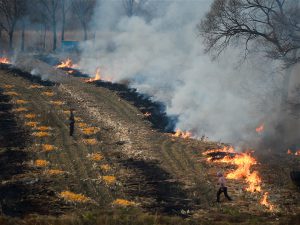Since 1988, the People’s Republic of China (PRC) has recognised its legal obligation to “protect, develop and rationally utilise wildlife resources” in the first article of its Wildlife Protection Law. Now in 2016, the language of the law’s first article has dropped “utilisation” of wildlife from its revised commitment to “maintain biodiversity and ecological balance, and promote the establishment of ecological civilization.” Nevertheless, critics inside and outside China remain dissatisfied that other articles of the law continue to constitute a legal basis for tiger farming and other commercial practices that stimulate demand for wildlife products, legal or not.
 Serious reconsideration of wildlife exploitation is a relatively new global historical trend. Pressure for measures that transcend “rational utilisation” of wildlife as simply resources to be managed has been exerted by a growing scientific consensus since the 1990s that earth is facing a sixth mass extinction – the first demonstrably driven by human actions. The ongoing quantification of this unprecedented event proffers its most recent and arresting calculation in the World Wildlife Fund’s “Living Planet Report 2016,” which estimates that two-thirds of the world’s wild animals could be extinct by 2020 in comparison with 1970 population levels.
Serious reconsideration of wildlife exploitation is a relatively new global historical trend. Pressure for measures that transcend “rational utilisation” of wildlife as simply resources to be managed has been exerted by a growing scientific consensus since the 1990s that earth is facing a sixth mass extinction – the first demonstrably driven by human actions. The ongoing quantification of this unprecedented event proffers its most recent and arresting calculation in the World Wildlife Fund’s “Living Planet Report 2016,” which estimates that two-thirds of the world’s wild animals could be extinct by 2020 in comparison with 1970 population levels.
Awareness that people and animals are interdependent has reached an existential level. As the revisions of China’s wildlife law indicate, conceptions of this human-animal interdependency have been undergoing profound reconsideration. From this new perspective, it becomes possible to look back and see formative relations between humans and animals during China’s imperial period (ca. 1500-1900) that have shaped the existing ecological and political contours of China’s current map.
The unification of China and Inner Asia (i.e., Manchuria, Mongolia, Xinjiang and Tibet) by the last imperial dynasty, the Qing (1644-1912), resulted in a territory larger than today’s People’s Republic of China. The human and ecological diversity encompassed within this expanse is the primary environmental legacy of the PRC’s imperial predecessor.
It is unlikely that this legacy would have existed without the Manchu bowmen, who rode south to conquer China proper in the name of the Qing during the mid-seventeenth century. However, warfare between humans obscures a tie between Inner Asian people and animals even more fundamental to the Qing conquest: Manchus only learnt to be soldiers by chasing animals that did not want to be caught.
Military tactics
The Inner Asian military skills that expanded China during the seventeenth and eighteenth centuries up to, and beyond, its present-day size necessitated chasing wild animals through ecosystems that China proper lacked.
A fine testimony to the pursuit of game for the basic formation and preservation of Manchu identity comes from a 1749 report by Buhi, a senior Manchu cavalry commander. Buhi worried that young troopers would lose their military skills unless they could hunt “wild animals . . . from horseback.” The requisite habitat and animals, however, existed only in the Mongolian steppe north of the Great Wall. Here, unlike in Buhi’s garrison to the south in China proper, animals like rabbits, foxes and gazelles “still” ran wild. Buhi wanted to take his troops on annual forays because “if they are only familiar with the archery on the training field and do not hunt, it will be difficult for them to attain excellence.”
Pastoral lifestyles
Inner Asian pastoral skills, formed over millennia between Mongols and livestock, were also maintained by the Qing against Han immigrant pressures during the Qing period to preserve human diversity unsustainable in agrarian China proper. The Qing preserved herds and herders not only by mediating between competing Mongol groups, but also by providing disaster relief from extreme steppe weather that could shatter their coherence. Qing relief, in the form of grain and silver, saved several thousand Urad households when fierce winter storms killed off 70% of their livestock in 1734. A few years later, a 1741 imperial edict recognised the pastoral lifestyle was an existential but threatened component of Mongol identity: “relying only on our grants [of grain and silver] for a livelihood cannot be a permanent strategy, and must result in the loss of [the Mongols’] original way of life.”
Qing authorities worked to preserve human-livestock interdependencies on the steppe for strategic reasons. Such interdependencies continued to define the political status of Inner Mongolia as an autonomous region into the PRC. China is now looking back to past historical practices for a more viable pastoral solution to grassland degradation and to replace unsustainable industrial agricultural practices imposed by the modernizing state, although mining has emerged as a new threat to herding.
Mosquitos as agents of history
Other human-animal relations during the Qing have left a perceptible legacy. Malarial mosquitoes, for example, kept large waves of susceptible Han settlers out of indigenous areas in southwestern Yunnan, where potentially lethal falciparum malaria and some of the greatest PRC ethnic diversity still exist today. The connection between mosquitos and malaria was not understood until around 1900 and was not regionally identified until the 1930s.
Malarial mosquitos impeded direct Qing expansion into the region, leaving territorial and demographic legacies. The Qianlong emperor (1736-96) admitted as much in 1780 when he declared that he would never again fight Myanmar because of the casualties caused by disease among his elite troops during the 1766-69 war between the two dynastic states. Consequently, indigenous autonomy, conventionally termed “native chieftainships (tusi), was left relatively intact for a much longer period of time than in other parts of China. The differential disease resistance between more vulnerable Han settlers and hardier indigenous peoples thus had significant historical consequences.
My book, Across Forest, Steppe and Mountain: Environment, Identity and Empire in Qing China’s Borderlands, is an environmental history that examines human-animal relations between the seventeenth and nineteenth centuries from a twenty-first century perspective. It focuses on the historical significance of these interdependent relations in the formation of the dynastic borderlands of Manchuria, Inner Mongolia and Yunnan that are integral parts of China today. One of the most enduring legacies of these relations is the extensive diversity that can now be mapped across the PRC.






